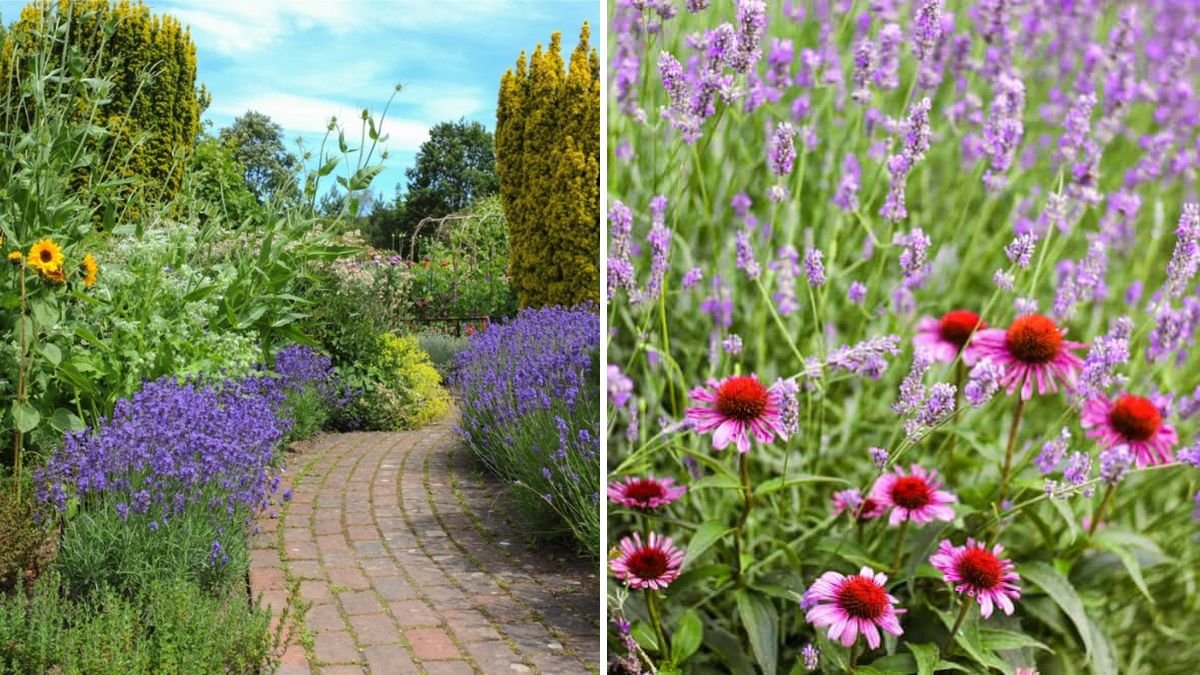Lavender (Lavandula spp.) is one of the most beloved garden plants, known for its soothing fragrance, striking purple flowers, and pollinator-friendly blooms. Beyond its aesthetic appeal and aromatic benefits, lavender is also a natural pest deterrent, making it a perfect companion plant in your garden. However, the true potential of lavender is unlocked when paired with the right companion plants. Proper combinations can improve garden health, enhance blooms, and create stunning visual arrangements.
In this article, we’ll explore five plants that thrive next to lavender, why they are compatible, and tips for maximizing growth and beauty in your garden.
Why Companion Planting Matters
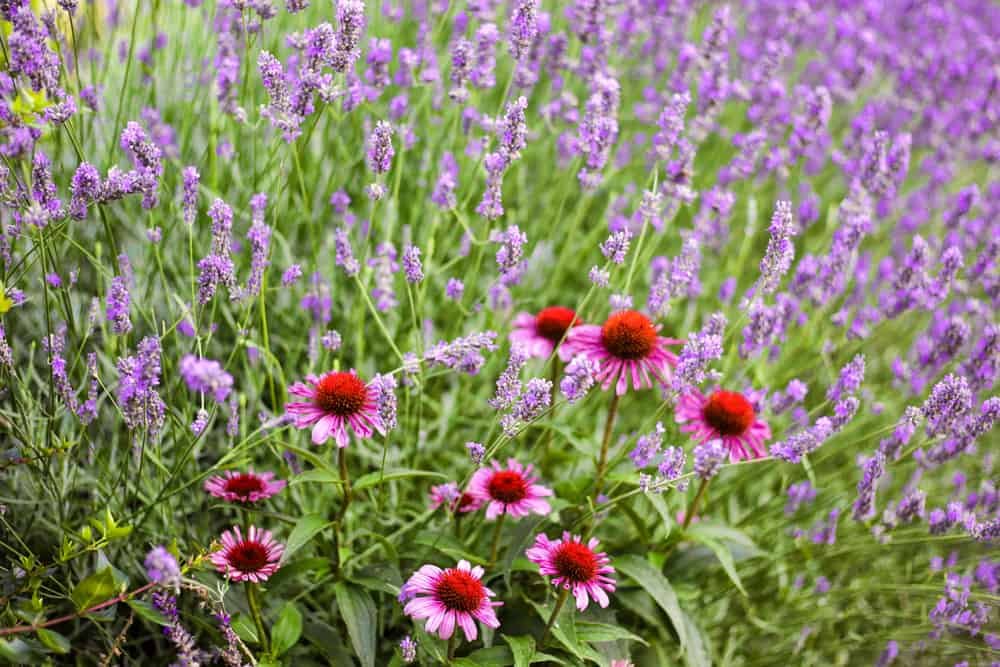
Companion planting is the practice of growing plants together that benefit each other. When done correctly, it can:
- Improve soil fertility and structure
- Repel pests naturally
- Attract beneficial insects and pollinators
- Enhance the visual appeal of the garden
- Encourage healthier, stronger plant growth
Lavender is drought-tolerant and prefers well-drained soil and full sun, so the best companion plants share similar growing conditions. Let’s explore which plants are ideal neighbors.
1. Roses (Rosa spp.)
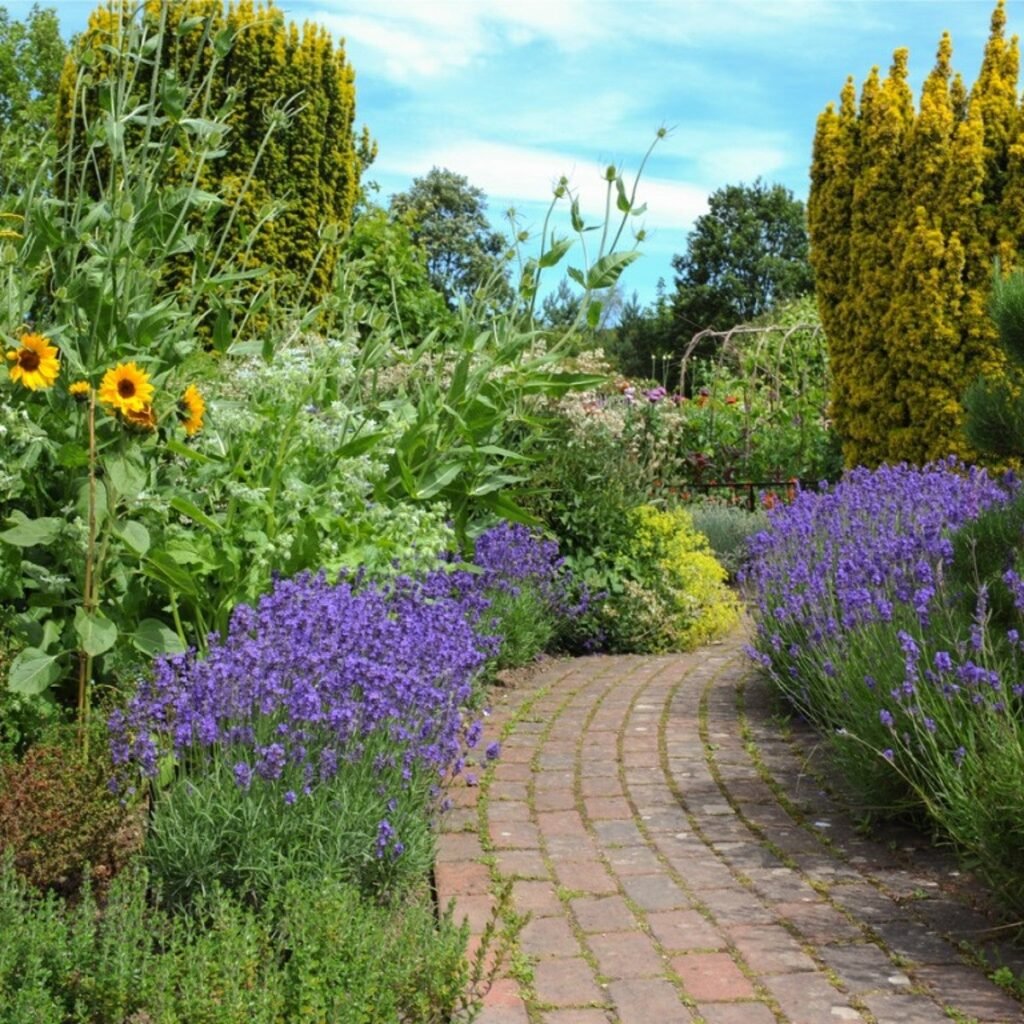
Roses and lavender are a classic garden pairing, celebrated for their complementary beauty and fragrance.
Why They Work Well Together:
- Lavender’s aroma repels aphids and other rose pests, reducing the need for chemical pesticides.
- Both prefer full sun and well-draining soil.
- Lavender’s soft purple flowers contrast beautifully with roses’ vibrant reds, pinks, and whites.
Planting Tips:
- Plant lavender at the base of rose bushes or along borders to create a fragrant, colorful foundation.
- Allow enough space between plants for air circulation, which helps prevent fungal diseases in roses.
- Deadhead roses regularly to encourage blooms while letting lavender’s spikes remain undisturbed.
Expert Insight: Lavender not only protects roses but also attracts pollinators like bees and butterflies, ensuring robust flowering.
2. Thyme (Thymus spp.)
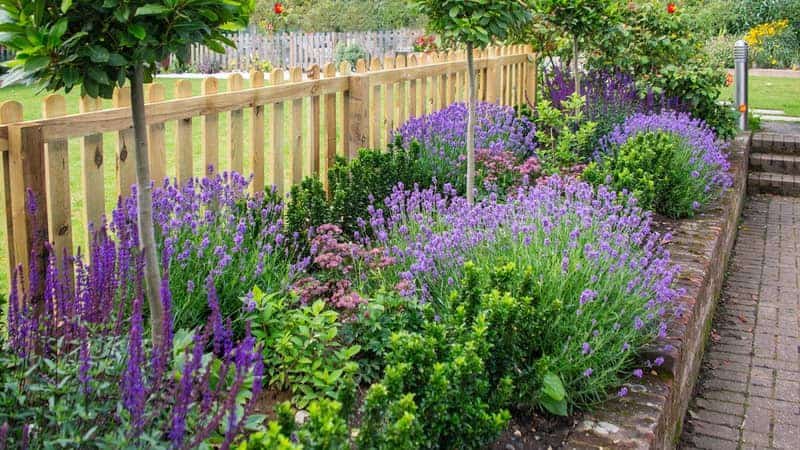
Thyme is a low-growing herb that pairs perfectly with lavender in both herb gardens and decorative borders.
Why They Work Well Together:
- Both are Mediterranean herbs that thrive in full sun and dry, well-draining soil.
- Thyme acts as a ground cover, suppressing weeds and retaining soil moisture near lavender roots.
- Lavender and thyme release aromatic compounds that deter pests such as whiteflies and aphids.
Planting Tips:
- Plant thyme around the base of lavender to create a lush, aromatic carpet.
- Harvest thyme leaves regularly, which encourages denser growth.
- Avoid overwatering; both lavender and thyme prefer slightly dry conditions.
Expert Insight: Pairing these herbs creates a low-maintenance, drought-tolerant garden that smells amazing and attracts beneficial insects.
3. Echinacea (Echinacea purpurea)
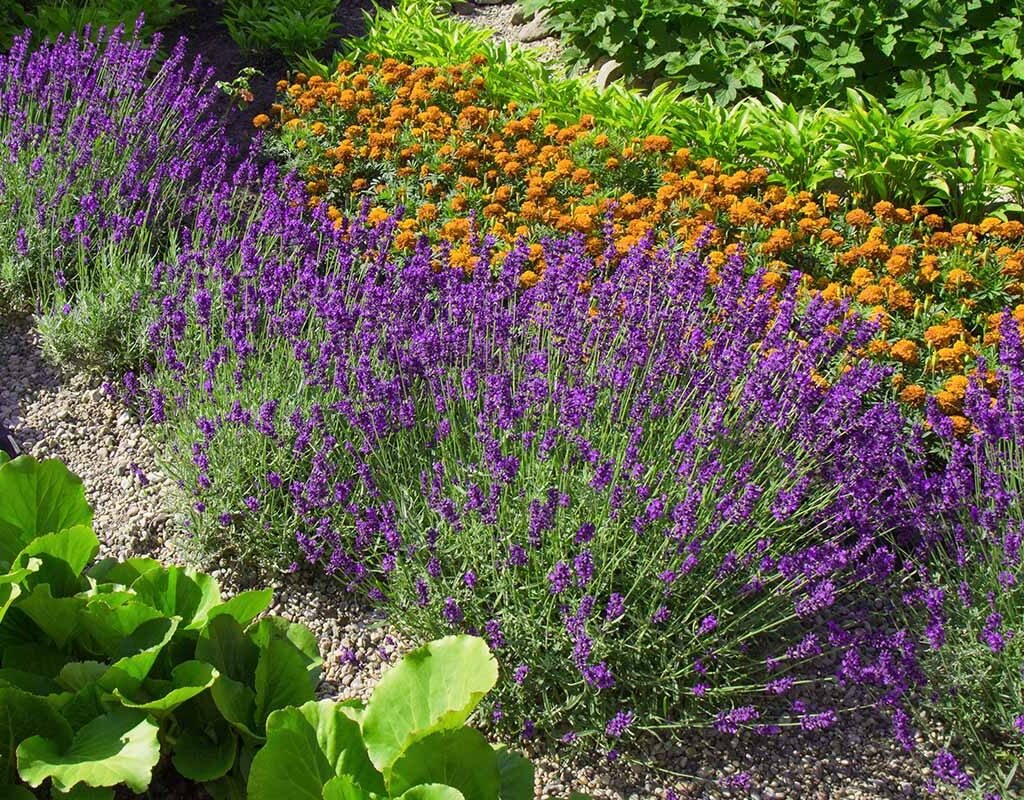
Echinacea, commonly known as coneflower, is a pollinator-friendly perennial that pairs beautifully with lavender for summer-long color.
Why They Work Well Together:
- Both enjoy full sun exposure and well-draining soil.
- Lavender’s gray-green foliage complements the bright purple, pink, or white blooms of coneflowers.
- Echinacea attracts bees and butterflies, enhancing lavender’s pollination.
Planting Tips:
- Space plants properly to allow airflow, reducing fungal problems.
- Choose medium-sized coneflower varieties to avoid overshadowing lavender.
- Water new echinacea plants moderately until established, then reduce watering to match lavender’s tolerance.
Expert Insight: The combination of tall coneflowers and bushy lavender creates vertical interest in perennial beds while supporting garden biodiversity.
4. Catmint (Nepeta spp.)
Catmint is a hardy perennial with lavender-blue flowers and aromatic foliage that complements and protects lavender.
Why They Work Well Together:
- Both plants tolerate drought and full sun, making them excellent low-maintenance companions.
- Catmint’s scent repels pests like aphids and Japanese beetles, which may threaten lavender.
- Long-lasting catmint blooms extend the flowering season when planted next to lavender.
Planting Tips:
- Choose compact catmint varieties for container or border planting with lavender.
- Prune lightly after flowering to maintain shape and encourage rebloom.
- Ensure enough spacing to prevent overcrowding, as catmint can spread vigorously.
Expert Insight: Lavender and catmint together form a pollinator magnet, attracting bees, butterflies, and hummingbirds, which boosts overall garden health.
5. Sedum (Sedum spp.)
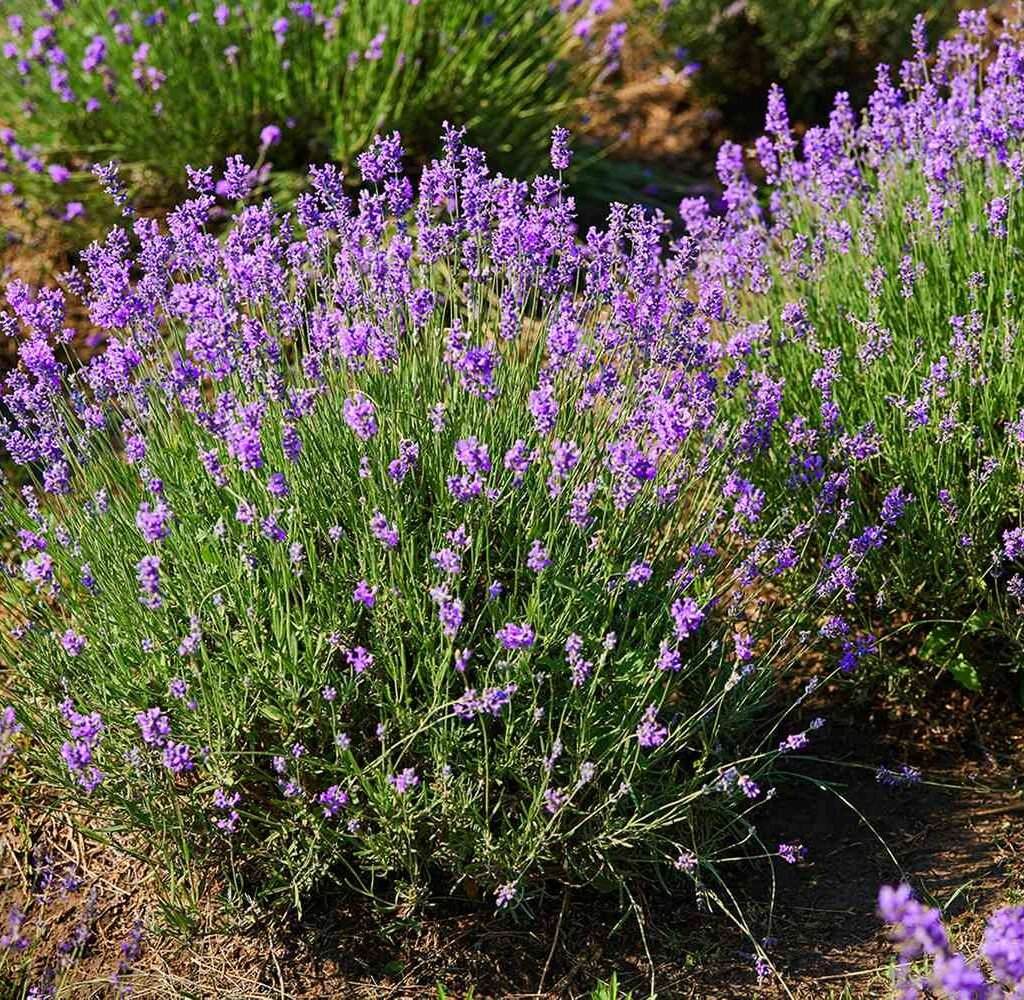
Sedum, or stonecrop, is a succulent perennial that thrives in dry, sunny conditions, making it a perfect companion for lavender.
Why They Work Well Together:
- Sedum’s succulent foliage provides a textural contrast to lavender’s soft spikes.
- Both are drought-tolerant and require minimal watering once established.
- Sedum blooms late in the season, extending color and interest in a lavender bed.
Planting Tips:
- Use sedum as a border or groundcover near lavender to fill gaps and enhance visual appeal.
- Ensure proper spacing to avoid shading lavender.
- Minimal fertilization is needed; excess nutrients can reduce flowering intensity.
Expert Insight: Sedum and lavender together create a resilient, low-maintenance garden that looks stunning from mid-summer through fall.
Tips for Maximizing Growth and Harmony
- Sunlight: All companion plants should receive at least 6–8 hours of direct sunlight to thrive with lavender.
- Soil Conditions: Use well-draining soil with a slightly alkaline pH. Adding sand or gravel improves drainage.
- Watering: Lavender prefers dry soil, so water sparingly once established. Companion plants like thyme, catmint, and sedum also tolerate drought.
- Spacing: Avoid overcrowding to allow airflow, which reduces fungal disease and ensures strong growth.
- Pollinator-Friendly Practices: Avoid pesticides that harm bees and butterflies to maximize the benefits of companion planting.
- Pruning: Deadhead lavender and companion plants to encourage rebloom and maintain tidy appearance.
Benefits of Planting Companions with Lavender
- Enhanced Pest Control: Aromatic compounds repel unwanted insects naturally.
- Extended Blooming Season: Companion plants with staggered bloom times keep the garden colorful longer.
- Attracting Pollinators: Bees, butterflies, and hummingbirds help all plants flourish.
- Visual Harmony: Complementary foliage textures and flower colors enhance garden aesthetics.
- Drought Tolerance: Companion plants with similar water needs reduce maintenance and conserve resources.
Conclusion
Lavender is a versatile, fragrant, and beautiful addition to any garden. When paired with the right companions—roses, thyme, echinacea, catmint, and sedum—its benefits multiply, creating pest-resistant, pollinator-friendly, and visually stunning gardens. Companion planting with lavender is not just about aesthetics; it’s a strategic gardening choice that enhances plant health, extends flowering seasons, and reduces the need for chemical interventions.
By carefully selecting plants that thrive in similar sunlight, soil, and water conditions, gardeners can enjoy a vibrant, low-maintenance, and fragrant garden year after year. Whether you are cultivating a small balcony garden, a herb bed, or a sprawling backyard, planting these five companions alongside lavender ensures maximum beauty, health, and harmony in your garden.
